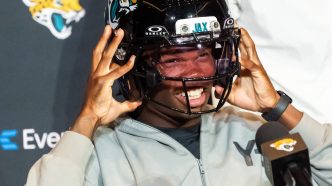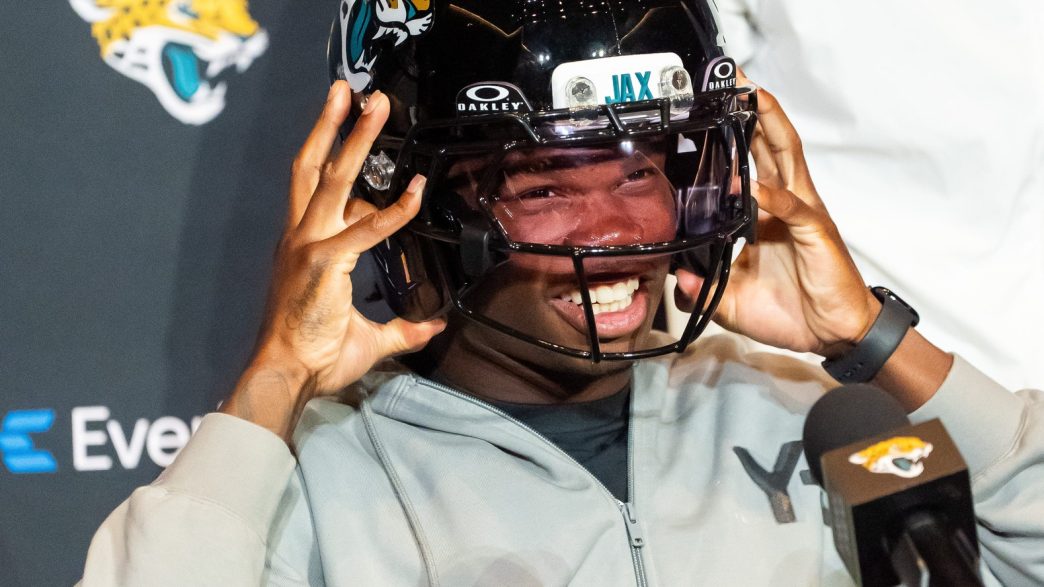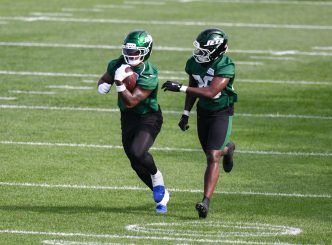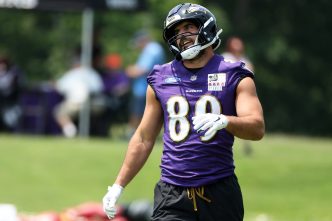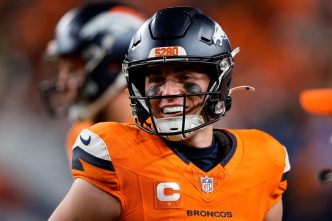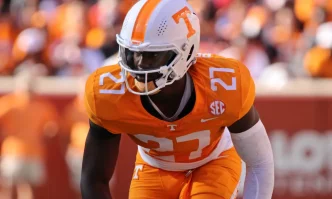The Jacksonville Jaguars are rolling the dice on one of the NFL’s most audacious experiments, building their future around No. 2 overall pick Travis Hunter, the two-way phenom from Colorado. As reported by NFL insider Cameron Wolfe on May 5, 2025, the Jaguars plan to start Hunter as a wide receiver but have a long-term vision of deploying him as a full-time two-way player, splitting time between offense and defense as he did in college. With rookie minicamp kicking off on May 10 at the Miller Electric Center, Hunter’s elite receiving skills will take center stage, but Jacksonville’s coaching staff, led by Doug Pederson, is already scheming ways to unleash his defensive prowess. Boasting 1,258 receiving yards and four interceptions in 2024, Hunter’s versatility could redefine the Jaguars’ roster and spark a franchise turnaround. Let’s dive into the plan, Hunter’s unique talents, and what this bold strategy means for Jacksonville’s 2025 season.
Hunter’s college tape at Colorado was a masterclass in two-way dominance. As a wide receiver, he racked up 92 catches for 1,258 yards and 15 touchdowns in 12 games, averaging 13.7 yards per catch with a 79.2 PFF receiving grade. On defense, as a cornerback, he snagged four interceptions, broke up 26 passes, and allowed a 54.3% completion rate when targeted, earning an 88.1 PFF coverage grade. His 2024 Heisman Trophy win—the first for a two-way player since Charles Woodson in 1997—cemented his status as a generational talent. At 6-foot-1, 185 pounds, with 4.39-second 40 speed and a 39-inch vertical, Hunter’s athleticism (9.92 RAS) is tailor-made for the NFL. Jaguars GM Trent Baalke, who traded up to No. 2 to draft him, called Hunter “a unicorn” at the April 25 draft presser, per ESPN. Wolfe quoted a Jags coach praising his intangibles: “He was a culture builder both on and off the field.”
The Jaguars’ plan, per Wolfe, is deliberate. Hunter will focus on wide receiver during rookie minicamp, running routes and building chemistry with quarterback Trevor Lawrence, who’s entering a make-or-break 2025 after a 3-14 season. Drills at the Miller Electric Center will emphasize offensive integration—slants, posts, and go routes where Hunter’s 83.7% catch rate and 496 yards after catch shone in 2024. Defensively, he’ll dip his toes into coordinator Ryan Nielsen’s scheme, learning coverages and press-man techniques alongside corners Tyson Campbell and Ronald Darby. “They love his ball skills and how he can impact the game more on offense,” Wolfe reported, but the staff is dreaming big: “Wouldn’t it be cool to see him catch a touchdown from Trevor Lawrence and then pick him off in practice?” That vision starts in minicamp but won’t fully materialize until training camp in July, when Jacksonville plans to test Hunter’s two-way snap count.
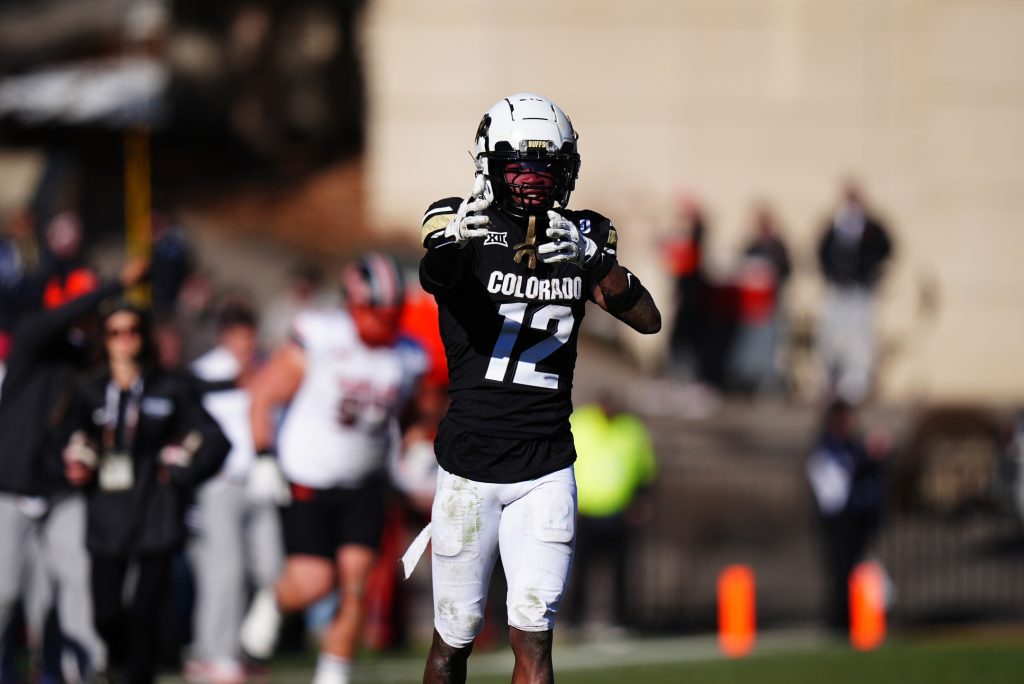
Managing Hunter’s workload is critical. At Colorado, he played 1,242 snaps (664 offensive, 578 defensive) across 12 games, an unsustainable 103.5 snaps per game for the NFL’s 17-game grind. The Jaguars, per NFL Network’s Ian Rapoport, aim to cap him at 60-70 snaps per game initially, with 40-50 on offense and 20-30 on defense, adjusting based on matchups. His primary role as a WR aligns with the team’s need to replace Calvin Ridley, who left for Tennessee in 2024. Jacksonville’s 2024 passing offense ranked 27th (184.2 yards per game), with Lawrence throwing for 2,765 yards, 14 TDs, and 12 INTs in 13 games before a shoulder injury. Hunter’s 1,258-yard ceiling could elevate Brian Thomas Jr. (44 catches, 689 yards) and Gabe Davis (38 catches, 452 yards), forming a trio to rival top WR rooms like Miami’s. Defensively, his four INTs and 26 PBUs could bolster a secondary that allowed 7.9 yards per attempt (26th) in 2024.
The strategy isn’t without precedent but is rare in the modern NFL. Deion Sanders, Hunter’s college coach, played both ways for the Falcons and Cowboys, logging 512 receiving yards and seven INTs in 1994. More recently, Seattle’s Coby Bryant played 12 offensive snaps in 2022, and Myles Jack moonlighted at RB for Pittsburgh in 2019. Hunter’s 2,094 college snaps (57% offense, 43% defense) dwarf those experiments, and his 90.3 PFF overall grade suggests he can handle both roles. Still, the Jaguars are treading carefully. Pederson, who coached Philly to a Super Bowl in 2017, plans to use Hunter in “packages” on defense—nickel sets or third-and-long—while leaning on him as a WR2 or WR3 behind Thomas. Special teams, where Hunter returned 12 punts for 189 yards at Colorado, could also factor in, though Baalke wants to limit wear-and-tear.
The hype around Hunter is palpable, with Bet365 listing him at +200 for Offensive Rookie of the Year and +150 for Defensive Rookie, a two-way betting line unseen since Woodson, per Covers.com. Fans at the open May 10 practice will see him in teal and gold, likely torching rookie DBs in one-on-ones. His impact could be immediate—his 15 TDs tied for third in FBS, and his 0.48 EPA per target ranked 12th. Defensively, his 2.1% missed tackle rate and 54.3 passer rating allowed when targeted scream playmaker. For Lawrence, who’s on a five-year, $275 million extension, Hunter’s a lifeline. A 2024 shoulder sprain and 1-9 start tanked Jacksonville’s season, but Lawrence’s 2023 (4,016 yards, 21 TDs) shows potential. Hunter’s 13.7 yards per catch could push the Jags’ 22nd-ranked EPA per play into the top 15.
Risks loom. Two-way players face burnout—Sanders played 1,069 snaps in 1994 but never topped 800 again. Hunter’s 185-pound frame, light for a CB, could struggle against physical WRs like DK Metcalf or Tee Higgins, and his 6.1% drop rate as a receiver needs work. Jacksonville’s 3-14 record and 27th-ranked point differential (-138) demand a culture shift, and Hunter’s “culture builder” rep, per Wolfe, must translate. The Jags’ offseason moves—signing edge Josh Allen to a five-year, $150 million deal and drafting LSU DT Maason Smith—aim to fortify the roster, but a porous O-line (25.1% pressure rate, 23rd) could limit Hunter’s targets. Pederson’s staff, including OC Press Taylor, must balance his snaps to avoid diminishing returns.
For Jacksonville, betting on Hunter is a moonshot. His 1.9 WAR at Colorado (1.2 offense, 0.7 defense) suggests he’s worth the No. 2 pick, and his 4.39 speed could make him a matchup nightmare. If he delivers 800 receiving yards and three INTs, he’ll justify the hype, potentially lifting the Jags to 7-10 or better in a winnable AFC South (Houston 9-8, Indy 7-10 in 2024). The alternative—a one-dimensional role—would waste his gifts. With Lawrence’s job on the line and fans clamoring for a playoff push, Hunter’s two-way gamble could redefine the franchise. On May 10, the teal and gold faithful get their first look. Buckle up, Jacksonville—Travis Hunter’s ready to rewrite the NFL script.

